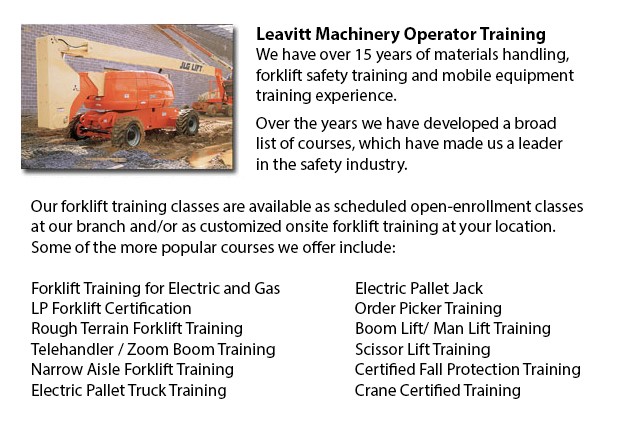
Aerial Platform Training Ottawa - Aerial lifts might be used to accomplish certain different duties done in hard to reach aerial spaces. Many of the tasks associated with this style of lift include performing routine upkeep on structures with high ceilings, repairing phone and utility cables, lifting burdensome shelving units, and pruning tree branches. A ladder could also be utilized for some of the aforementioned jobs, although aerial platform lifts provide more security and stability when properly used.
There are a number of different types of aerial forklifts available, each being capable of performing slightly different tasks. Painters will often use a scissor lift platform, which can be utilized to get in touch with the 2nd story of buildings. The scissor aerial platform lifts use criss-cross braces to stretch out and extend upwards. There is a table attached to the top of the braces that rises simultaneously as the criss-cross braces lift.
Cherry pickers and bucket lift trucks are a further kind of the aerial lift. Normally, they possess a bucket at the end of an extended arm and as the arm unfolds, the attached bucket platform rises. Lift trucks utilize a pronged arm that rises upwards as the lever is moved. Boom lift trucks have a hydraulic arm which extends outward and lifts the platform. Every one of these aerial platform lifts require special training to operate.
Training programs offered through Occupational Safety & Health Association, known also as OSHA, embrace safety methods, system operation, repair and inspection and machine weight capacities. Successful completion of these education courses earns a special certified certificate. Only properly licensed people who have OSHA operating licenses should run aerial lift trucks. The Occupational Safety & Health Organization has formed rules to maintain safety and prevent injury while utilizing aerial hoists. Common sense rules such as not using this piece of equipment to give rides and ensuring all tires on aerial hoists are braced so as to prevent machine tipping are mentioned within the rules.
Sadly, figures reveal that greater than 20 aerial hoist operators pass away each year while operating and nearly ten percent of those are commercial painters. The bulk of these incidents were caused by inappropriate tie bracing, hence some of these could have been prevented. Operators should make sure that all wheels are locked and braces as a critical safety precaution to stop the machine from toppling over.
Other rules include marking the encircling area of the device in an observable manner to protect passers-by and to guarantee they do not come too close to the operating machine. It is crucial to ensure that there are also 10 feet of clearance between any electrical lines and the aerial lift. Operators of this apparatus are also highly recommended to always wear the appropriate security harness when up in the air.
-
Telehandler Ticket Ottawa
Telehandler Ticket Ottawa - The telehandler or telescopic handler is a commonly utilized equipment in industrial and agricultural applications. This machine is the same in look to a forklift and also functions in a similar manner, though telehandlers... More -
Telehandler License Ottawa
Telehandler License Ottawa - The telehandler or telescopic handler is a frequently used machine in industrial and agricultural applications. This particular equipment is the same in appearance to a forklift and even functions in a similar way, althou... More -
Forklift Training Courses Ottawa
Forklift Training Courses Ottawa - Our forklift operator safety training has been tailored for illiteracy, thus cutting the training time in half. We provide forklift training certification, lift-truck operator driver safety training evaluation, and... More -
Boom Lift Certification Ottawa
Boom Lift Certification Ottawa - Making use of elevated work platforms allow for work and maintenance operations to be carried out at elevated work heights which were otherwise unreachable. Workers using scissor lifts and boom lifts can be educated i... More -
Loader Operator Certification Ottawa
Loader Operator Certification Ottawa - Ways To Acquire A Loader Operator Certification - Loader Operator Certification is normally needed for personnel working within construction, warehouse or industrial setting to ensure the safe operation of forkl... More -
Aerial Lift / Boom Lift / Man Lift / Scissor Lift Training in Ottawa
Lift tables or also referred to as scissor hoists can raise both individuals and goods vertically. They are normally utilized in commercial, industrial and construction environments. Commonly, the use of a scissor lift truck is to lift and lower thin... More -
Skid Steer Loader Training in Ottawa
The engine powered skid-steer loader comprises a small and rigid frame, equipped together with lift arms which can connect to lots of industrial attachments and tools so as to perform a wide variety of labor saving jobs. Usually, skid-steer loaders a... More -
Scissor Lift Safety Training Ottawa
Scissor Lift Safety Training Ottawa - A Scissor Lift is a useful type of platform which generally moves in a vertical direction. The apparatus is capable of this movement because of the use of folding supports that are linked in a criss-cross pattern... More

Forklift Training Ottawa
Ottawa, Ontario
forklifttrainingottawa.com
Email Us
About Us


